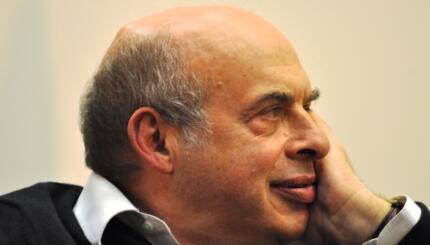A community’s sacred texts shed light on its beliefs and values. This is obvious when it comes to liturgy.
Hence the uproar, last year, over the pope’s reinstitution of the Latin Mass, and its prayer for the conversion of the Jews.
Of course, the principle is true when it comes to Jewish liturgy as well.
The inclusion of the matriarchs in liberal versions of the amidah or the use of female or gender-neutral God language reflect feminist (or at least female-friendly) theological inclinations. And when the Reform movement re-introduced language about the resurrection of the dead in the new prayerbook it published last year, it reflected the movement’s increased comfort with aspects of traditional Judaism.
But prayerbooks aren’t the only texts that shed light on a community’s religious values.
Soon after ArtScroll published its Hebrew-English Stone Edition of the Pentateuch in the early 1990s, it became the humash of choice in most Orthodox synagogues.
But the Stone humash wasn’t merely an updated translation of the Torah. Its commentaries differed wildly from the previous Hebrew-English humash of choice: the Hertz humash — edited by Joseph H. Hertz and published by Soncino.
While the Stone humash refers to traditional and modern (small “m”) Orthodox sources, Hertz availed himself of Christian works, academic Bible studies, as well as traditional sources.
By modern academic standards, Hertz’s commentary was by no means stellar. In fact, Hertz rejected the fundamental theoretical framework of modern Bible scholars — the Documentary Hypothesis. Nonetheless, whenever I was in a synagogue with both the Hertz and the Stone, I would always reach for the Hertz.
The Hertz engaged with the world, even if it did so under specific ideological constraints. The Stone, on the other hand, represented the swing toward social and theological insularity that has come to define much of contemporary Orthodoxy.
I bring all of this up because I stumbled upon some very interesting facts about Rabbi J.H. Hertz.
Hertz was born in Hungary in 1872 and was educated in New York. He served congregations in Syracuse and South Africa before becoming the Chief Rabbi of the British Empire. Hertz wasn’t always beloved by his more traditionalist colleagues, but he would certainly have been considered an Orthodox rabbi — as reflected in his position in Britain, as well as the fact that his humash was for decades standardly found in Orthodox congregations.
Yet interestingly, he was a graduate of the Jewish Theological Seminary. In fact, he was the very first graduate.
Of course, while JTS is, today, the flagship institution of the Conservative movement, back then, the Conservative movement was just getting off the ground, and in practice may not have differed much from Orthodoxy.
Still, many of the founders of the Conservative movement (and JTS) broke away from Reform Judaism — not Orthodoxy.
But the absolute most fascinating tidbit about Hertz:
In the 1920s, Hertz successfully organised international opposition to proposed calendar reform. The League of Nations was considering a calendar amendment, such that a given date would fall on the same day of the week every year. This requires that one day every year (two in leap years) is not any day of the week but a “world day”. Thus, once or twice a year there would be eight days rather than seven between consecutive Saturdays. Thus the Jewish Sabbath, which must occur every seventh day, would be on a different weekday each year. The same applies to the Christian Sabbath. Hertz realised that this would cause problems for Jews and Christians alike in observing their Sabbaths, and mobilised worldwide religious opposition to defeat the proposal.


